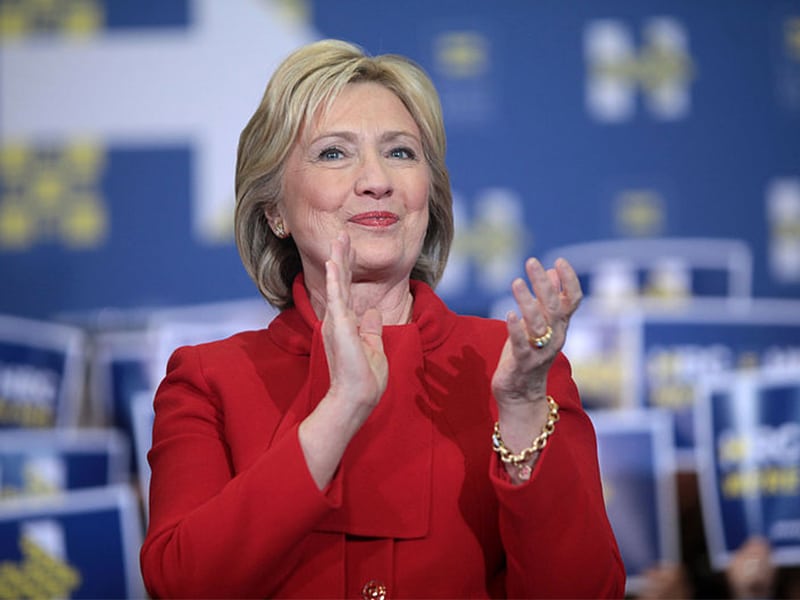On 8 March, we celebrate International Women’s Day (IWD) and the contributions women have made in Hong Kong and across the globe. Here, Expat Living contributor Melinda Murphy looks at some of the most prominent women in political history, including in the 46 years since the United Nations launched IWD.
My daughter is eleven. When anybody asks her what she wants to be when she grows up, she says, “The first female president of the United States.” That girl of mine is a born activist, waiting to blossom, passionate about all things women-related. This may because her mother is passionate, too – or perhaps it’s because we are both heavily involved in Girl Scouting, the largest female leadership training in the world.
Women seeking equality with men in politics is as old as time itself. Across the globe for decades, women have held rallies and marches bringing light to issues that affect them. Reproductive rights, violence against women, workplace equality and, of course, suffrage.

Getting the vote
Just earning the right to vote has been an arduous journey for women. The Isle of Man gave women landowners the right to vote in 1881, followed by the British colony of New Zealand in 1893. The most recent country to open up the polls to women is Saudi Arabia, whose King Abdullah issued a decree in 2011, ordering that women be allowed to vote and stand as candidates. However, the first opportunity to vote didn’t come until December 2015, almost a year after his death.
Leading a nation
Becoming a head of state has been even more challenging. Oh sure, there have been queens over the centuries, going all the way back to 1806 BC when Egypt’s Sobekneferu ruled. After her death, it took 400 more years before another woman, Hatshepsut, would be named pharaoh. And guess what? She was referred to as a king, not queen.
The road for women to run a country in modern times was paved by many extraordinary women in the past, each taking on other leadership positions in politics. The first woman ambassador in modern history was Alexandra Kollontai, appointed ambassador from the Soviet Union to Sweden in 1932. Imagine what it was like to be her, negotiating between men back when women weren’t supposed to even have an opinion? Oh, to have been a fly on the wall during those discussions! She was also one of the first women activists, organising mass marches for working-class women and peasants. I’d like to have met her.
In 1945, Eleanor Roosevelt became the American delegate for the recently-formed United Nations. A year later, she was elected as the head of the United Nations Rights Commission, helping draft the Declaration of Human Rights, adopted in 1948.
But for a woman to become the head of state? Well, that was a different story. Rarely does a woman win the popular vote, somewhat the opposite of what happened in the 2016 US election when Hillary Clinton won the popular vote, but did not earn the presidency. (American elections are decided by the electoral college and not the popular vote.)
In 1960, Sirimavo Bandaranaike of Sri Lanka became the modern world’s first female head of government. Since then, only 76 women have served as modern heads of state. (Three-quarters of them have come into office since 1990.)
In 1974, Argentina’s Isabel Martinez de Peron became the first modern female president of any nation, inheriting the office when her husband Juan Peron died in office (she had been his Vice President).
Dame Pearlette Louisy from Saint Lucia held office for 20 years and 105 days, making her the longest-ever serving female head of state. Wow. I can’t imagine holding a job that long, much less running an entire nation.
The picture in Asia
Asia is a bit different. According to the International Business Times, if you want to rule a country here, you’ll need some sort of nepotistic connection. Most have been wives or daughters of rulers. Singapore’s president is an exception. Hamilah Jacob was elected unopposed in 2017.
Indira Gandhi was also an unusual case. Even though she was the daughter of a Prime Minister, she refused to assume the role when he died. Instead, she chose to become a cabinet minister and, in 1996 (seven years after her father died), she won an election to become the Prime Minister. She served from 1966 to 1977 and again from 1980 until her assassination in 1984.
A gender imbalance
Of course, the number of countries with a female in power is a bit misleading. Why? Because in some cases, these women have only remained in power for months – or a couple of days, even. According to a study by the World Economic Forum, only 33 countries have had a female leader for four years or more since 1966. The top country may surprise you: Bangladesh. It has had the most total years served by female leaders. The same study found that gender imbalances in politics is greater than in health, education or employment.
According to the Inter-Parliamentary Union, globally women make up about a quarter of national parliaments. My home, the US, more women have been elected than ever, now making up about a quarter of both Congress and the Senate. That puts the US 75th out of 193 countries, tied with Montenegro and between Cabo Verde and Singapore. Rwanda currently has the most women in parliament.
Still, we’ve come a long way since my grandmother carried a homemade sign and marched the streets of New York, demanding the right to vote. Who knows? Maybe my daughter will be the first female president. Personally? I hope we have a female president before she’s old enough to take office. Maybe she’ll have to set her sights a little higher!
Like this? See more in our Living in Hong Kong section. For more ways to celebrate International Women’s Day head to our Things To Do section.













